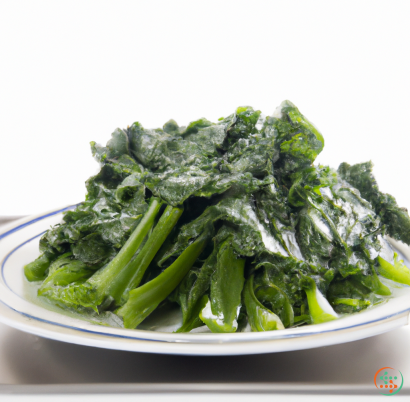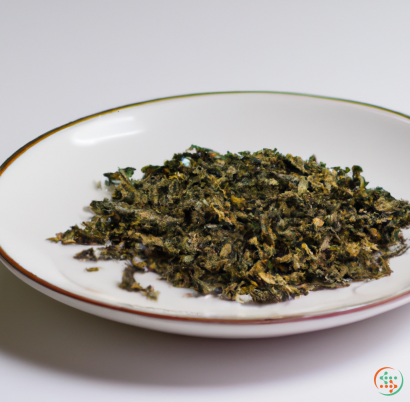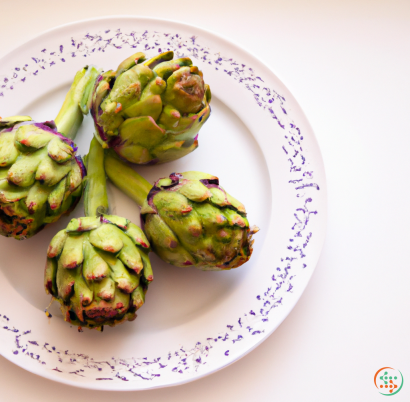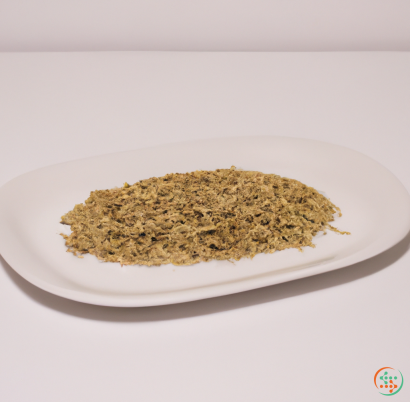Turnip Greens
What is a Turnip Greens?
Turnip greens are nutritious, delicious leafy greens that offer a wealth of health benefits. They come from the same family as kale and collard greens, both of which are well known for their health-giving properties. Turnip greens are a nutritional powerhouse, containing an abundance of vitamins, minerals, and other nutrients. They can be cooked in various ways, making them a versatile and healthful addition to the diet.
Turnip greens, also known as turnip tops, are the young leaves of the turnip plant. They are oval in shape, with a bright green hue and reddish tinges. The leaves usually have a mild, slightly bitter flavor that pairs well with savory dishes.
What Makes Turnip Greens So Healthy?
Turnip greens are an excellent source of many essential nutrients and health-promoting compounds.
Vitamin K and Vitamin A: Turnip greens are an outstanding source of vitamin K and vitamin A, both of which are important for healthy bones and vision. Vitamin K is known for its role in the production of clotting factors, which help to prevent bleeding. It is also essential for proper calcium absorption and bone health. Meanwhile, vitamin A is important for proper immune health and vision.
Fiber: Turnip greens are a good source of dietary fiber, which can help to lower cholesterol levels and keep the digestive system regular. Fiber may also play a role in preventing colon cancer, as well as reducing inflammation in the body.
Minerals: They are also a valuable source of minerals including calcium, zinc, iron, magnesium, and potassium. Calcium is important for healthy bones, as well as for maintaining proper nerve and muscle function. Zinc is important for proper immunity, growth, and development. Iron is essential for healthy formation of red blood cells and transportation of oxygen throughout the body. Magnesium plays an important role in the production and function of enzymes, while potassium is important for proper cellular and metabolic functions.
Antioxidants:Turnip greens also contain compounds like carotenoids, flavonoids, and polyphenols, which are powerful antioxidants. These compounds may help reduce inflammation, lower the risk of cancer, and protect against cell damage.
How to Enjoy Turnip Greens
Turnip greens can be enjoyed cooked or raw, depending on your preference. They can be cooked in various ways to make delicious dishes. To preserve the flavor and nutrition, try lightly steaming them or quickly sautéing them with oil, garlic, and spices.
To enjoy them raw, finely chop the greens and use them to add flavor and crunch to salads. Turnip greens are delicious in soups, stews, and stir-fries, or simply mix them in with other leafy greens for a tasty salad. You can also add them to smoothies for an extra nutritious boost.
The Bottom Line
Turnip greens are nutritious, delicious leafy greens that are an excellent source of many essential nutrients and plant compounds. They can be easily cooked in various ways and added to a variety of dishes, making them a wonderful addition to the diet. Incorporating more turnip greens into your diet can help you reap many nutritional benefits.
Turnip greens, a nutritious dark green leafy vegetable, are edible greens, derived from the root (swollen stem) of the turnip. Turnip greens, also known as Rapa, Tarian, Rutib and Singra are native to Europe and the Mediterranean region. Also known as "turnip tops" or just "greens," they are loaded with vitamins and minerals. In this blog post, we will explore how turnip greens are produced, harvested, and brought to our dinner plate.
The Turnip Plant
The turnip plant is part of the cruciferous vegetable family and related to broccoli and radish. The plant has edible leaves and roots. The leaves offer a mild, almost sweet and slightly bitter taste, while the root is crunchy and slightly sweet. The root of the turnip is underground and is covered with a thin, white layer of flesh that can be eaten raw, cooked and pickled. The turnip greens are the edible and nutritional edible top part growing above ground, the leafy portion of the plant.
Harvesting and Processing
Turnip greens are harvested in the early-to-mid-fall season and need to be picked before they bolt (flower and seed). To harvest, the turnip greens are cut off at the base, leaving a short stem and 2-3 inches of leaf attached. The remaining root can still be eaten, but will not regrow. After harvesting, the greens must be washed, trimmed and removed of any burr or bad parts. Depending on their size and the intended use, they may need to be chopped.
Packaging and Shipping
Once the turnip greens are washed and cut, they are packaged into polyethylene bags, plastic containers, or cardboard boxes. The packaging material is selected according to the quality and price of the product, and the customer’s preference for environmental friendly options. The packages are labeled with product information such as name, origin, weight, and expiration date. The turnip greens are then transported to local farmers' markets and grocery stores, or shipped nationally or internationally with trucks and ships.
Storing Turnip Greens
Fresh turnip greens should be stored in the refrigerator to retain their crispness and nutrition. The greens should be stored in a temperature of above 5°C and kept in storage for no longer than two weeks. For longer storage periods, turnip greens can be frozen or canned. The best way to freeze turnip greens is to blanch them in boiling water for two minutes and then plunge them into an ice-cold bath. Once cooled, they can be spread on a baking sheet and frozen at a temperature of ?18°C. The frozen turnip greens can be stored in the freezer for up to 12 months. Frozen turnip greens can be cooked and consumed directly, or defrosted and cooked.
Cooking Turnip Greens
Turnip greens can be cooked in several different ways. Whether boiled, steamed, sautéed, or roasted, turnip greens are delicious when cooked with olive oil, garlic and a pinch of salt. For boiling, the turnip greens should be chopped into small sections, brought to a rapid boil with a pinch of salt and boiled for about five minutes. After boiling, the turnip greens should be drained and served with a drizzle of olive oil and a pinch of salt.
Alternatively, turnip greens can be steamed for about four to six minutes with a teaspoon of olive oil and a pinch of salt. For a more delicious and unique dish, you can also roast the turnip greens in the oven at 180°C for 20-25 minutes. The turnip greens can be cooked in the oven with a mixture of butter or olive oil, garlic, and herbs.
Turnips at the Dinner Table
Turnip greens can be used in many dishes. They are a key ingredient in popular dishes such as Southern turnip greens and other traditional Southern dishes, winter soups and stews, and salads. Additionally, the leaves can be used in a variety of dishes such as pasta dishes, omelets, quiches, sandwiches, and stir-fries. Turnip greens are a delicious and nutritious side dish for any meal.
Conclusion
Turnip greens are a nutritious and flavorful addition to any meal. The turnip plant has edible leaves and roots, but the greens are the edible and nutritional edible parts growing above ground. Turnip greens are harvested in the early-to-mid-fall season, and then processed and packaged for consumption. The best way to store turnip greens is to refrigerate them for up to two weeks, or freeze them for longer periods. Turnip greens can be cooked in several different ways such as boiling, steaming, sautéing and roasting. They can then be consumed in many dishes, adding delicious flavor and nutrition to any meal.
| Vitamin A | 0.579 mg | |
| Beta-Carotene | 0.006952 grams | |
| Vitamin E | 0.00286 grams | |
| Vitamin K | 0.251 mg | |
| Vitamin C | 0.06 grams | |
| Vitamin B1 | 0.07 mg | |
| Vitamin B2 | 0.1 mg | |
| Vitamin B3 | 0.6 mg | |
| Vitamin B5 | 0.38 mg | |
| Vitamin B6 | 0.26 mg | |
| Vitamin B9 | 0.194 mg |
| Calcium | 0.19 grams |
Daily Value 1.3 g
|
| Iron | 0.0011 grams |
Daily Value 0.018 g
|
| Magnesium | 0.031 grams |
Daily Value 0.4 g
|
| Phosphorus | 0.042 grams |
Daily Value 1.25 g
|
| Potassium | 0.296 grams |
Daily Value 4.7 g
|
| Sodium | 0.04 grams |
Daily Value 2.3 g
|
| Zinc | 0.19 mg |
Daily Value 0.011 g
|
| Copper | 0.35 mg |
Daily Value 0.9 mg
|
| Manganese | 0.47 mg |
Daily Value 0.0023 g
|
| Selenium | 0.0012 mg |
Daily Value 0.055 mg
|
| Tryptophan | 0.026 grams | |
| Threonine | 0.082 grams | |
| Isoleucine | 0.078 grams | |
| Leucine | 0.137 grams | |
| Lysine | 0.098 grams | |
| Methionine | 0.034 grams | |
| Cystine | 0.017 grams | |
| Phenylalanine | 0.092 grams | |
| Tyrosine | 0.058 grams | |
| Valine | 0.102 grams | |
| Arginine | 0.094 grams | |
| Histidine | 0.036 grams | |
| Alanine | 0.103 grams | |
| Aspartic Acid | 0.158 grams | |
| Glutamic Acid | 0.204 grams | |
| Glycine | 0.09 grams | |
| Proline | 0.071 grams | |
| Serine | 0.061 grams |
| Glucose | 0.52 grams |
|
| Fructose | 0.29 grams |
|
| Total Sugars | 0.131141 grams |
per 100g
|
| Palmitic acid (16:0) | 0.05 grams |
|
| Stearic acid (18:0) | 0.01 grams |
|
| Total Saturated fatty acids: | 0.06 g | |
| Oleic acid (18:1) | 0.01 grams |
|
| Palmitoleic acid (16:1) | 0.01 grams |
|
| Total Monounsaturated fatty acids: | 0.02 g | |
| Linolenic acid (18:3) | 0.08 grams |
|
| Linoleic acid (18:2) | 0.04 grams |
|
| Total Polyunsaturated fatty acids: | 0.12 g | |
| Phytosterols | 0.01 grams |
|
| Total Sterols: | 0.01 g | |







